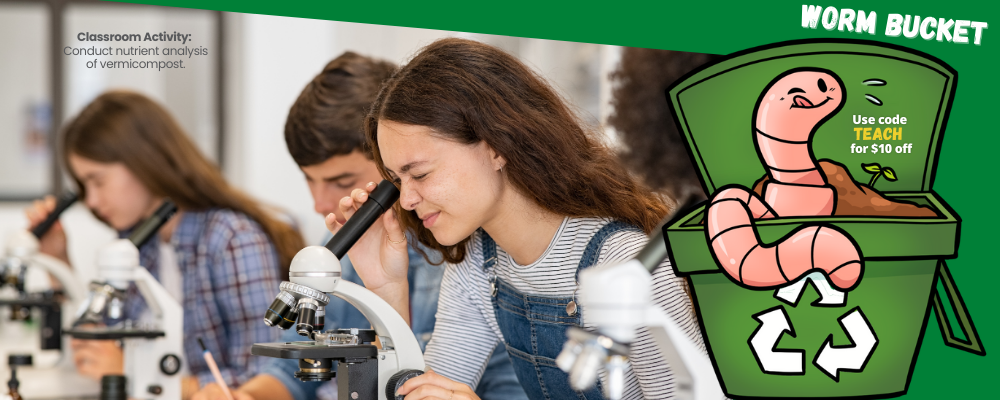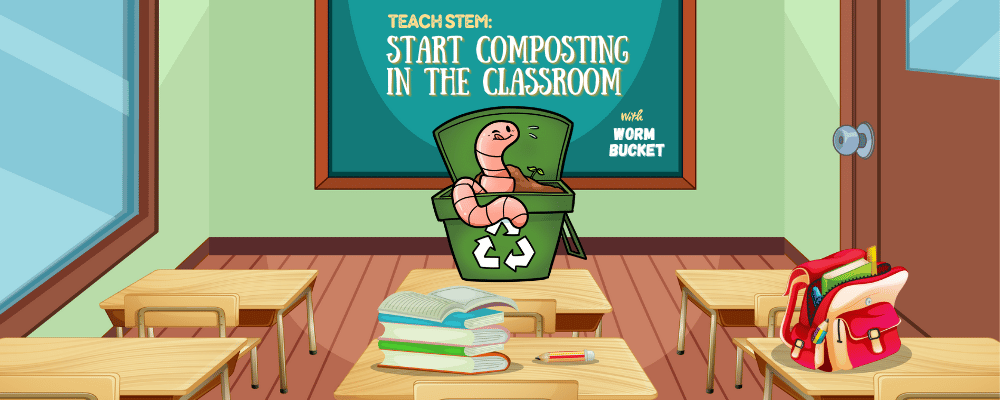written by Audrey Wynkoop
Learning should be fun. Don’t you agree?
Have you considered adding vermicomposting to your curriculum to inspire the young minds in your classroom? An indoor worm bin, like the Worm Bucket, is an excellent way to engage students in hands-on STEM (Science, Technology, Engineering, and Math) learning. Here are 3 Science Standards that coincide with classroom worm composting and fun ways to incorporate them into your lesson plans at any grade level.
Life Sciences
The Life Sciences standard encompasses various aspects of biology and ecology. It is focused on the understanding of how living things are structured, how they function and how they adapt and respond to their environment.
Vermicomposting Classroom Activities:
- Observe and record worm behaviors. Monitor how worms move, react to light and interact with different types of food scraps.
- Study the lifecycle of Red Wiggler composting worms.
- Investigate the decomposition rates of different organic matter.
- Conduct nutrient content analysis of vermicompost.
- Create an ideal worm habitat, considering factors such as moisture, temperature, and food sources.
Earth and Human Activity
The Earth and Human Activity standard explores the relationship between human activity and Earth’s natural processes. Teaching this standard encourages students to examine the impact of human actions and decisions on topics like climate change, resource use and sustainability.
Vermicomposting Classroom Activities:
- Conduct a “waste audit” in your classroom, school or home and identify how vermicomposting can reduce organic waste and help with sustainability.
- Compare vermicompost to chemical fertilizers and the impact on plant growth, plant health and soil quality over time.
- Become a sustainability advocate by doing vermicomposting outreach project in your community. Set up a local vermicomposting bin or organize a workshop and educate others about the benefits of vermicomposting.
- Discuss the concept of a carbon footprint and how vermicomposting can reduce greenhouse gas emissions.
Ecosystems
The Ecosystems Standard studies how living organisms interact with each other and the environments they live in. A worm bin is a perfect example to use.
Vermicomposting Classroom Activities:
- Create a food web map that includes decomposers like worms along with plants, insects, and other organisms.
- Identify decomposers, scavengers, and other organisms within your vermicomposting bin to gain insight into the complex interactions occurring within the small ecosystem.
- Use vermicompost to create a healthy soil ecosystem for plants and explore how microorganisms aid in nutrient cycling.
Having an indoor worm composting bin in your classroom is a great way to keep students engaged and learning in a hands-on environment all year round. Create STEM lessons that keep kids interested by introducing real-world problem solving, critical thinking skills and scientific based inquiries. The worms are squiggly-wiggly and sure to keep everyone smiling, laughing, and learning!
Additional Resource Videos:
Practicing Sustainability by Reusing Materials
See what others are saying about the Worm Bucket Indoor Composting Kit:
5 Stars: “Perfect for my class”
5 Stars: “My kids love the worms and we love how easy it is to setup and maintain!”
5 Stars: “I'm an environmental educator and wanted a box for personal use and to show students so I picked this kit and worms combo. Fast service on both. The boxes and color info sheets look incredible and are well done. Everything is engaging. I LOVE the compostable packaging & no plastic! Have only had it a week but am excited to see how it goes!”


